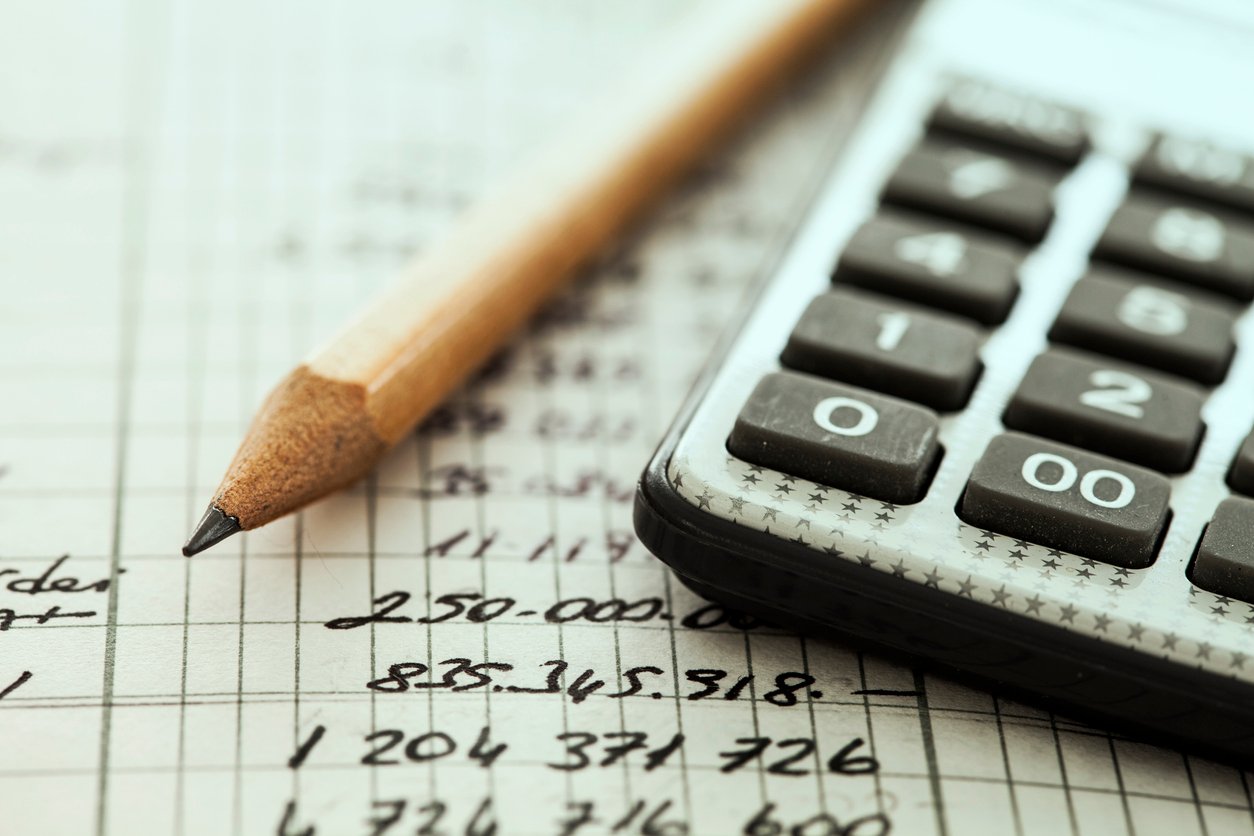Conducting a property valuation is a critical part of making the best investment decision possible. That’s because not every rental property provides the same yield to investors. At first glance two properties may appear to be equal. But as the saying goes, looks can be deceiving.
By accurately valuing rental property, you can profitably scale up your investment portfolio of single-family rentals and avoid buying someone else’s mistake.
In this article we’ll discuss everything a real estate investor needs to know to do a property valuation.
But first...
What is a Property Valuation?
A property valuation is a calculation that real estate investors use to determine the value of a property. Property valuations can be conducted by investors using specific data on the property and market, by licensed appraisers, and by real estate brokers with a BPO (broker opinion of value).

Numbers You Need Before Doing a Property Valuation
Before you can begin calculating property value, you’ll need to collect some key financial data for your property valuation:
- Mortgage payment and whether or not the payment includes property taxes and insurance.
- Down payment amount which will vary based on the type of mortgage loan and the investment strategy being used.
- Rental income including an allowance for vacancy and the amount of rental cash flow left over after paying the mortgage and normal operating expenses.
- Price to income ratio which compares the median home price to the median income in the market. As the ratio decreases, homes become more affordable to buy, which means the number of prospective tenants could decrease as well.
- Gross rental yield which is measured by dividing the total purchase price of the house (including closing costs and fees, and improvements needed) by the annual gross rent. The higher the rental yield percentage, the better the investment property could be.
- Capitalization rate (or cap rate) which measures the rate of return on a rental property and is calculated by dividing the net operating income by the market value of the house. Because the cap rate doesn’t factor in the cost of financing, it’s easier to make an apples-to-apples comparison of similar properties in the same market area.
- Cash flow which is the money that’s left over after all expenses, including the mortgage, have been paid and is usually measured on a monthly and annual basis. Negative cash flow occurs when the amount of expenses and debt service is greater than the amount of rental income received.
General Factors Affecting Property Value
You’ve probably heard the saying that “real estate is all about location, location, location.” That’s absolutely true. But location is just one of the seven general factors that affect a property’s value:
Property Size and Floor Plan
The price per square foot is the most common metric used to value residential real estate. It’s important because even though you may also use financial calculations such as cap rate and ROI to assess the income-producing potential of the property, your exit strategy may call for selling to an owner occupant and not another investor.
In addition to the square footage of the house, the number of bedrooms, bathrooms, and the general floor plan of the property all affect the value. Just because a house is bigger doesn’t mean it necessarily offers a better value to an investor. That’s because the characteristics of the house should match the market and target renter.
For example, a house with three bedrooms and one bathroom would be considered functionally obsolete by today’s living standards. A small, one-bedroom house in a college town will have a lower price per square foot but may also be harder to rent because students prefer to have roommates to share the rent with.
Improvements Made to The Property
Single-family rentals where the property owner has already made improvements can be a great deal for buyers. That’s because very few improvements, if any, increase property value by the same amount as the money spent on the improvement.
According to the 2019 Cost vs. Value Report from Remodeling Magazine, if a seller spends $47,427 to add a bathroom, the resale value of the home increases by less than $29,000. Spending $22,636 to replace the asphalt shingles on a roof adds just $15,427 to a house’s value. The seller’s loss is your gain.
Condition of The Property
Deferred maintenance items such as a roof or heating system that needs to be replaced, or an obsolete floor plan, reduce property value because of the money which will soon be needed for updating.
Age of The Property
New properties usually have higher values than older ones because fewer routine repairs and capital improvements are needed in the foreseeable future.
Market Conditions
In a seller’s market, where there are more buyers than sellers, property values will increase due to an imbalance between supply and demand.
Property Neighborhood
Areas with a high number of vacancies and listings, graffiti and criminal activity, or a neighborhood that’s in general decline can force landlords to reduce rents to attract tenants. Both rental income and NOI go down, potentially creating negative cash flow.
On the other hand, property values will generally be higher if they’re near schools, employment districts, and amenities like shopping, dining out, and recreation. Rent growth is stronger due to increased tenant demand.
Location
Last, but certainly not least, is the property location.
Locational factors that affect property value include property and rental tax rates, rent control, population and job growth in the market, and whether the area is prone to natural disasters or seasonal weather that can make it harder to rent during certain times of the year.

Five Steps Used to Evaluate Rental Property Value
Once you’ve narrowed down potential rental property investments and gathered your key financial data, it’s time to start evaluating potential deals.
This simple spreadsheet by Roofstock provides an easy way to view the potential financial performance of a given property. You can use it to forecast the potential return of a property. Simply enter some information to view projected key return on investment (ROI) metrics, including cash flow, cash-on-cash return, net operating income, and cap rate.
Successful real estate investors use a step-by-step system to quickly analyze potential deals in their pipeline.
Step #1: Determine fair market value
Fair market value is the price an informed buyer is willing to pay, and a seller is willing to accept. Sources for determining the fair market value of a rental property include MLS comps, Zillow, property appraisal, and the online marketplace at Roofstock.
Step #2: Determine the replacement cost
Replacement cost is the money it would take to construct the exact same property today. It factors in things like land value and the cost of labor and materials.
Step #3: Determine the fair market rent
Even if you’re buying a rental property with a tenant in place, you’ll want to determine if the rent is “at market.” If it’s too high, the existing tenant may not renew the lease. On the other hand, a below market rent could provide some upside potential when the lease is renewed. Sources for determining market rents include Roofstock, Zillow, Craigslist, and local property management companies.
Step #4: Calculate the NOI
NOI, or net operating income, is calculated by subtracting normal operating expenses from gross income. Normal operating expenses include the cost of routine repairs and maintenance, utilities, insurance, property management fees, and property taxes. However, NOI does not include the mortgage payment.
Step #5: Perform financial calculations on each rental property
Common financial calculations used to conduct a property valuation are cap rate, ROI, and cash-on-cash return. In the next section we’ll take a detailed look at how these formulas are calculated and the best use for each one.
Using a Professional Appraisal as a "Reality Check"
Hiring a professional, licensed appraiser to provide you with the value of a property is a good and inexpensive way to get a second-opinion on the value you’ve come up with.
Professional appraisers use a mixture of science and art. Because they’re a disinterested third-party with no skin in the game, emotion is completely eliminated from how they value a property.
Appraisers draw on market-specific data such as recent sales comparables and property condition and amenities, then adjust the value of the subject property (the one you’re thinking about buying) up or down to make an apples-to-apples comparison.
For example, if the subject house has a newer roof it will be worth more than a comparable property with an old roof. If recent comparable houses sold have a swimming pool and yours doesn’t, your property valuation will be lower.

Key Financial Calculations to Determine Rental Property Value
While there are literally dozens of ways to determine the value of a rental property, most real estate investors use three key financial calculations to decide what a house is worth:
Cap Rate
The capitalization rate compares the annual net income of a rental property to the property value:
- Cap rate = NOI / Property value
- $10,000 NOI / $125,000 property value = .08 or 8% cap rate
Remember that NOI doesn’t include a deduction for mortgage payments, only normal operating expenses. This makes it much easier to make an apples-to-apples comparison between properties.
Also, while the cap rate formula is a good tool to use to compare similar properties in the same real estate market, it shouldn’t be used to compare properties in different markets. That’s because market-specific factors like supply, demand, and market rents vary from place to place.
Return on Investment
Return on investment (ROI) measures the total return on a rental property:
- ROI = Annual return / Total investment
- $4,000 annual return ($10,000 NOI - $6,000 mortgage payment) / $25,000 total investment = .16 or 16% ROI
Unlike the cap rate calculation, ROI considers the cost of financing a rental property. Because of this, the same property can have different ROIs depending on the down payment and other loan terms. Roofstock provides a great way to calculate financing using factors like down payment amount, credit score, and mortgage loan terms.
Using our above example, let’s look at how the ROI changes if an investor puts less money down and has a slightly lower annual return because of a higher mortgage payment:
- $3,000 annual return ($10,000 NOI - $7,000 mortgage payment) / $12,500 total investment = .24 or 24%
Cash-on-Cash Return
Cash-on-cash return measures the amount of cash flow compared to the amount of cash invested. Unlike ROI, which can be used to measure return on investment over the entire time a property is held, cash-on-cash only measures the return for a current period:
- Cash-on-cash return = Annual cash flow / Total cash invested
Here’s an example of how to measure cash-on-cash return.
Let’s say an investor buys a house for $125,000 and puts 20% down. The investor has to spend $1,500 right after closing for needed upgrades. The home is already rented to a tenant, so there’s also an annual NOI of $10,000 and an annual cash flow of $4,000 after the annual mortgage expense of $6,000.
The investor’s cash-on-cash return for that year is:
- $2,500 annual cash flow ($10,000 NOI - $6,000 mortgage expense - $1,500 upgrading) / $26,500 cash invested ($25,000 down payment + $1,500 upgrading costs) = .094 or 9.4%
Next year, assuming the investor has normal operating expenses and the same NOI, the cash-on-cash return would be:
- $4,000 annual cash flow ($10,000 NOI - $6,000 mortgage expense) / $26,500 ($25,000 down payment + $1,500 upgrading costs) = .15 or 15%

Which Financial Calculation is The Best to Use?
The answer to this question depends on the investment strategy.
For example, cap rate is often used by buy-and-hold investors for property that is already generating income. Investors who want to maximize the power of leverage can boost their ROI by putting less money down or taking out a short-term, interest only loan.
Real estate investors buying rehab property where no current income is being generated may find that an annual cash-on-cash calculation is the best financial metric to use.
You can also use all three financial calculations when analyzing single-family rental property. Using multiple methods to determine the value of rental property is a key to making the best possible investment decisions.
Doing a Property Valuation is The Key to Investing Success
Not all rental property is created equal. Successful real estate investors use every tool at their disposal to make the smartest investment decisions possible.
- Numbers to know when doing a property valuation include market value, mortgage payment, market rent, and cash flow.
- Factors that affect property value include improvements needed or already made by the property owner, property age, market conditions, and location.
- Steps to evaluate property value include determining fair market value and rent, replacement cost, and NOI.
- Three key financial metrics used to calculate property value are cap rate, ROI, and cash-on-cash return.










